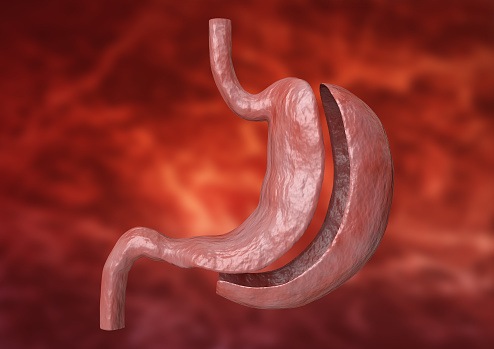
Defects in enzymes in the heme biosynthesis pathway are associated with acute hepatic porphyria (AHP), a group of rare genetic diseases. The most common subtype of AHP is acute intermittent porphyria (AIP), associated with accumulation of heme pathway intermediates, delta-aminolevulinic acid (ALA), and porphobilinogen (PBG), leading to acute attacks. Long-term complications include hypertension and chronic kidney disease, which is present in 30% to 60% of patients with biochemically active AIP. Patients who carry a genetic mutation and have elevated levels of ALA and PBG but are not experiencing acute attacks are classified as chronic high excreters (CHE).
During a virtual poster session at ASN Kidney Week 2021, Simina Ticau, PhD, presented results of an analysis of proteins in plasma of patients with AHP with recurrent acute attacks (>90% AIP). The poster was titled Renal Injury Biomarkers Are Elevated in Acute Hepatic Porphyria.
Proteomic analysis (Olink® platform) was used to measure 1196 proteins in plasma from consenting patients from the EXPLORE natural history study, the ENVISION phase 3 study, and patients with CHE in the ALN-AS1-001 phase 1 study at baseline. A separate cohort of healthy controls were age- and sex-matched to EXPLORE patients was also analyzed. The proteins that were significantly different between patients with AHP or CHE patients and controls were identified using linear regression accounting for age and sex.
A total of 212 plasma proteins were significantly different between healthy controls and patients with AHP. Two proteins with the largest effect sizes, kidney injury molecule-1 (KIM1; 3.4-fold; P=8.0e-13) and matrix metalloproteinase-7 (MMP7; 5-fold; P=1.5e-25) were previously described as biomarkers of kidney injury. Three additional kidney injury biomarkers (neutrophil gelatinase-associated lipocalin, cystatin C [CST3], and chitinase-3-like protein 1) showed significant elevations in patients with AHP.
There were moderate to strong correlations observed between each of those biomarkers and estimated glomerular filtration rate. Patients with AHP with a diagnosis of renal disease demonstrated significantly higher levels of each of those biomarkers compared with patients without a diagnosis of AHP (P<.01). In addition, KIM1, MMP7, and CST3 were significantly elevated in CHE patients compared with controls.
In conclusion, the researchers said, “Renal injury biomarkers may aid in diagnosing and managing kidney disease in patients with AHP suffering from recurrent acute attacks as well as chronic high excreters.”
Funding for the analysis was provided by Alnylam Pharmaceuticals.
Source: Ticau S, Yucius K, Karras A, et al. Renal injury biomarkers are elevated in acute hepatic porphyria. Abstract of a poster presented at the American Society of Nephrology virtual Kidney Week 2021 (Abstract PO0467), November 2021.





 © 2025 Mashup Media, LLC, a Formedics Property. All Rights Reserved.
© 2025 Mashup Media, LLC, a Formedics Property. All Rights Reserved.